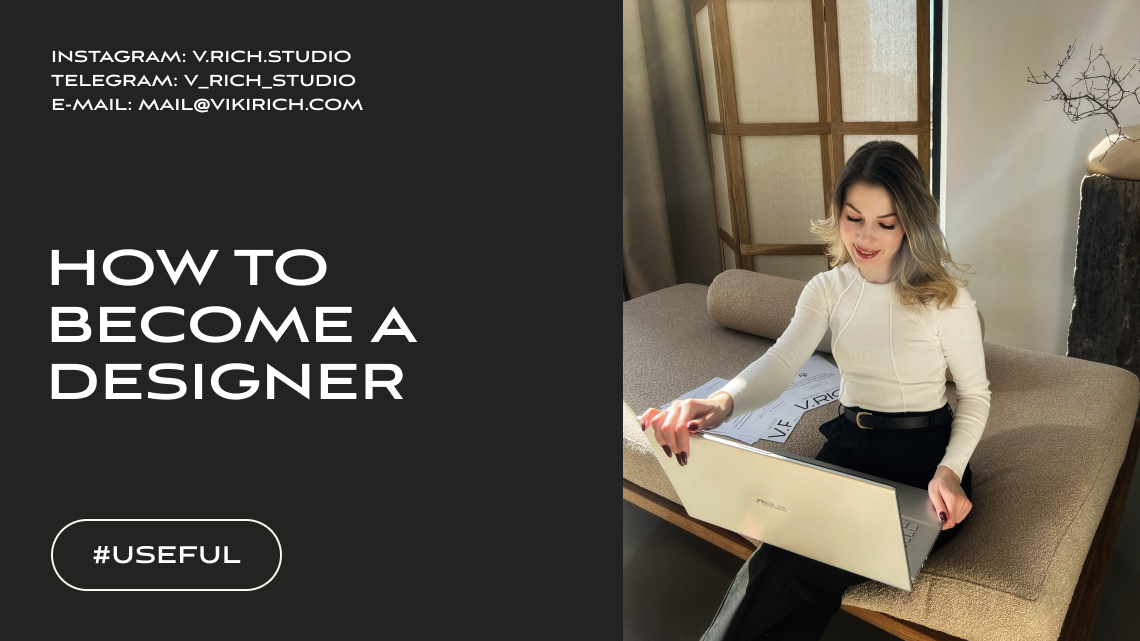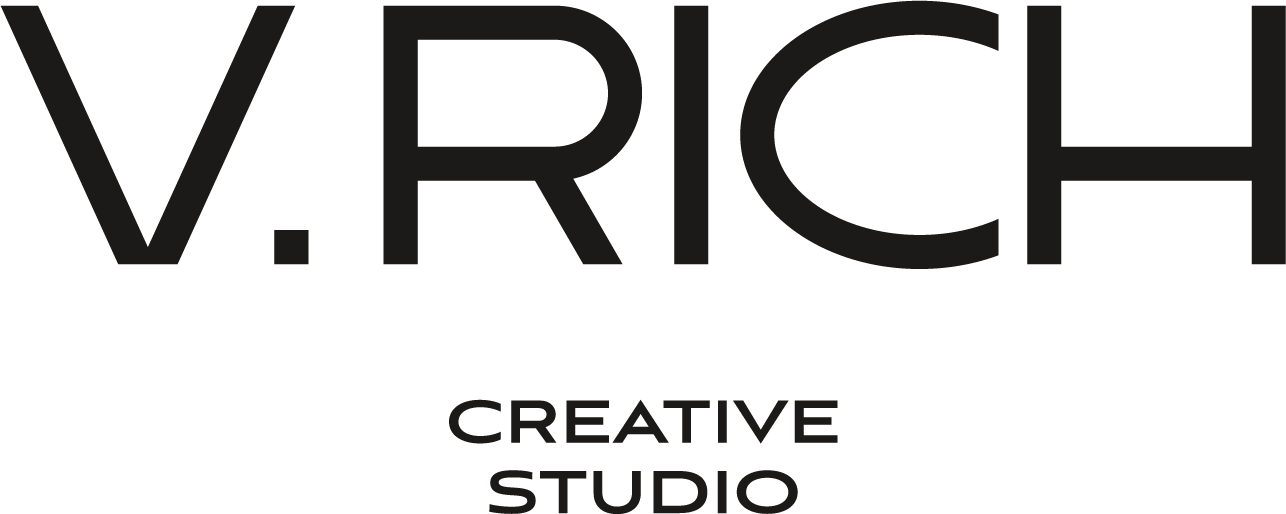How to become a designer

I’d like to say a few words about design to set the right mood and create the atmosphere. This is my life motto – even the most mundane things should be done with pleasure and atmosphere, as our life consists of small events. And they should be enjoyed.
If I were asked to describe DESIGN in one word, it would definitely be the word 'emotion'. We've chosen a wonderful profession whose essence lies in conveying various emotions through design tools such as composition, geometric shapes, colors, and fonts.
Through design, we help brands express their uniqueness, convey meanings and emotions even before a person reads the brand name!
I’m happy to be a part of your journey in a graphic design career. I sincerely wish you success!
3, 2, 1…
Let's go!
HOW TO BECOME A DESIGNER:
1. Learning design software
We begin learning design by mastering basic programs: Adobe Illustrator, Adobe Photoshop, and Figma. You won’t need the entire functionality to create designs, so the programs are learned relatively quickly. Personally, I learned Adobe Illustrator by drawing a vector fox from a YouTube video. Then I tried to recreate logos from Pinterest. Attention! These cannot be added to your portfolio as it violates copyright. But for practice, it’s a great idea.
2. Learning the basics of composition
Composition sets the mood, accents, and meanings of your project. With composition, you can emphasize the significance of one design element and downplay others. You can convey moods and emotions, and deliver meanings faster than one can read a brand name.
The foundation of composition includes: line, circle (or any other shape), and color. Combined, they form a harmonious system of compositional laws.
There are many compositional techniques. The main thing to remember is that there are no winning or poor compositional techniques, but rather meanings, goals, and brand character that should be conveyed through design.
3. Learning the basics of color
Color is one of the key elements conveying brand character. From early childhood, we have ingrained basics of color perception. For example, yellow is associated with warmth, blue with cold, etc.
When working on a project, we can choose colors in several ways:
- The first associative color line involves choosing colors based on associations ingrained in our subconscious.
For instance, the medical field is associated with light blue or white (colors of cleanliness), the beauty field with pink (to emphasize femininity and tenderness).
- The second associative color line involves choosing brand colors based on the company’s specific positioning rather than associations with the field.
COLOR MODELS:
Let’s explore two main color models used by designers daily: RGB and CMYK.
RGB consists of adaptive colors we see on digital devices. The RGB model comprises three main colors: Red, Green, and Blue. Colors in RGB are created using hexadecimal codes.
CMYK is the color model that transfers images onto paper in printing. During printing, four main colors (cyan, magenta, yellow, and black) are applied to paper. Unlike RGB, where the three main colors create white when combined, in CMYK, the white color is the surface (paper) onto which the ink is applied.
4. Learning about fonts
Like composition and color, fonts convey a brand’s character. This is why purely typographic logos are so valuable. They are not just fonts but a whole system of associations, moods, and meanings.
FONT CLASSIFICATION:
SERIF:
Old Serif
Еransitional Serifs
Modern Serifs –
Slab Serif
SANS SERIF:
Groteskque
Neogrotesques
Humanist
Geometric Sans Serif
ITALIC:
Formal
Casual
DISPLAY:
Display
5. Exposure and practice, practice, practice
One of the most crucial elements in a designer’s career is continuous learning and practice. Design is a constantly evolving field, so it’s important to keep up with technological innovations, trends, and new approaches to project work.
6. Building a portfolio
A portfolio is your business card. It should showcase your abilities and work style. It’s crucial to remember that the quality of work is more important than quantity. At the beginning of your career, you can create themes for logo development yourself and design projects as if a client commissioned the design from you.
We have covered six fundamental but very important points on how to become a designer. We wish you the best of luck in achieving your goals.
Order
design
Please leave a request in the contact form below and we will contact you soon to discuss the details.
Best regards, V.RICH STUDIO



